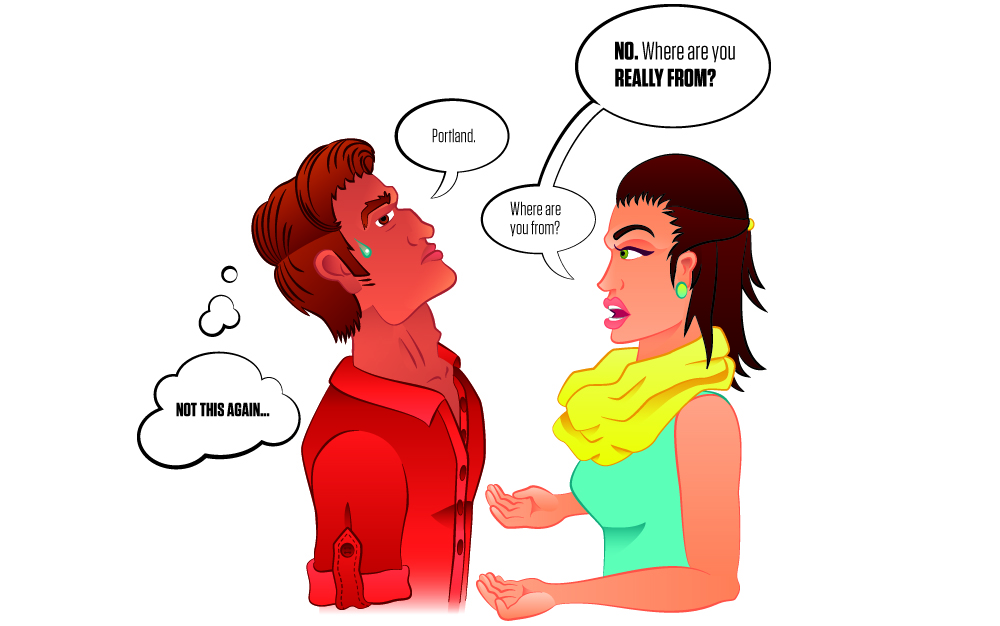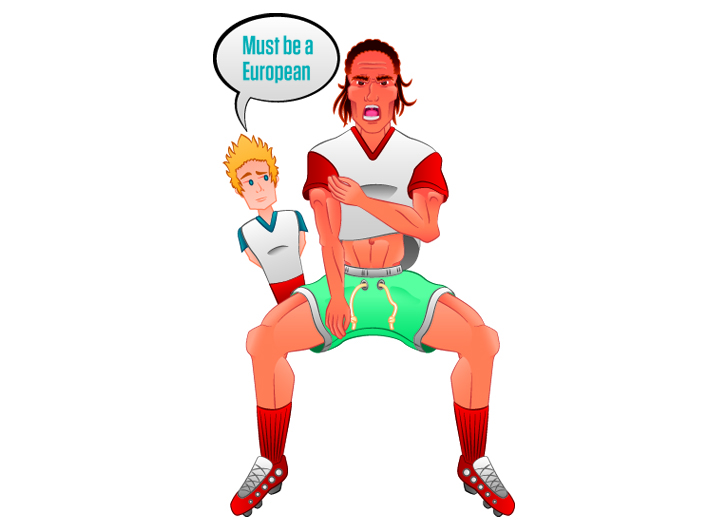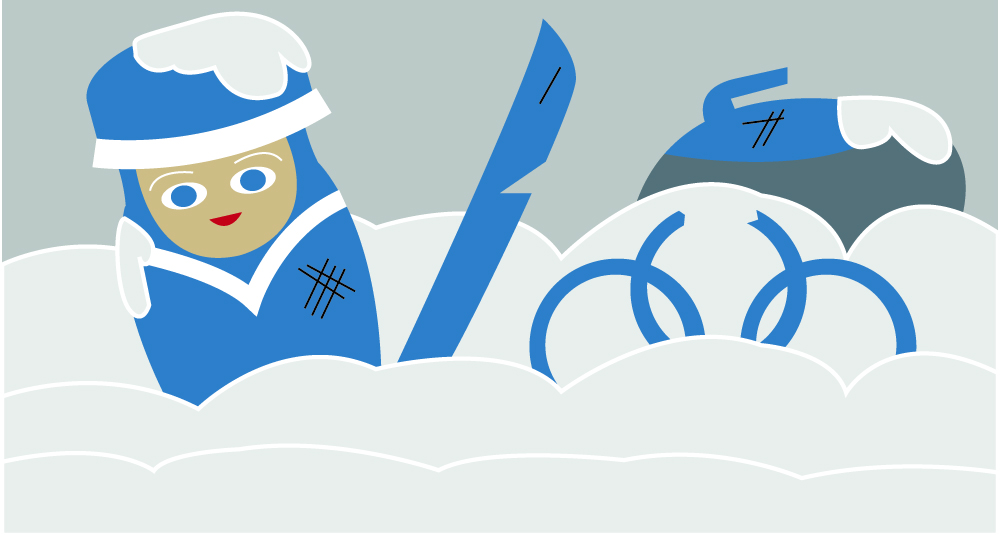Imagine one day that something has happened to your nose. It’s not clear to you what exactly is wrong with your nose. When you look in the mirror, you can’t see anything wrong with it at all. However, other people can. They take every opportunity to remind you that something is wrong with your nose.
“What happened? Are you feeling all right?”
“What did you do to yourself?”
“Are you sure you shouldn’t stay home today?”
Gradually, even though you still cannot perceive any injury, pain or ugliness, you begin to doubt your own thoughts. Perhaps the people around you are right; you’re the only person incapable of seeing that your nose has a problem, and it’s all your fault. Maybe you should see a doctor. Maybe, in order to spare people being concerned for you and to avoid stares and comments, you will spend more time alone at home instead of being out in public.
These are symptoms of the disease known as microaggressions. The microaggression is a psychological concept first discussed by African American psychiatrist Chester Pierce and popularized by thinkers such as Derald Wing Sue and Arudou Debito. As open and violent displays of racism and prejudice are waning, stealthier methods of expressing hate are emerging and receiving more scrutiny. A Google search of “microaggression” reveals myriad accounts of experiencing comments, gestures and actions that, whether unintentional or intentional, serve to denigrate and isolate listeners, and bolster prejudice.
As I examine Google right now, I see stories of female computer programmers being patronized and sexually harassed for daring to work in a field dominated by men, naturalized citizens of Japan being complimented for speaking a single word of Japanese and using chopsticks, black people encountering shocked looks for listening to country music, Chinese-American women being automatically viewed as prostitutes in China, and a depressingly diverse range of further microaggressions. Each time people are being told that something has happened to their noses, we are one step backward from reaching the goal of a society where content of character matters more than color of skin.
Last summer, I had my first brushes with microaggressions. Interestingly, these events occurred while I was vacationing in China, the country of my parents’ birth. I was fortunate enough to schedule a shadowing appointment in a Beijing hospital and observe doctors performing a surgical operation. As it was my first opportunity to see such an event, I jumped at taking the chance.
The first sign that my day was not going to proceed smoothly was when the head nurse appointed to greet me at the hospital arrived late. Though it was 15 minutes after the scheduled meeting time, she approached me without a smile or apology. I gave her a package of green tea I had prepared as a gift to thank her for permitting me to enter and view an operation, which she accepted with the same disposition she maintained since first seeing me.
“You don’t really speak Chinese, do you?”
In all the time I had spent in China before, I knew my grasp of Mandarin was never perfect. I constantly had to do battle with my memory to remember characters, words and phrases, learn new material and improve my accent, but no one had ever been brazen enough to criticize me for not being superb. The microaggression is a tool for downgrading others and reminding listeners of their lower position and their difference from “typical” people.
We entered a briefing where the operation was explained and I was introduced to the staff as someone whose “Chinese is really bad. He can’t speak Chinese.” My blood was boiling in humiliation. The nurses were apparently deaf, since I had been speaking Chinese with them for the last half hour.
The nurses guided me to a room where I was ordered by one-word comments to change into green scrubs. I was being addressed as a disobedient kindergartener who wouldn’t do his homework properly. Some of the nurses started using simple English phrases to reach me, thinking that it would make a difference.
“Wait here, OK?”
“Not like that, stupid!”
“You’re so silly!”
“Do you understand?”
Later, feeling quite hungry, I joined the operating team for lunch. They had ordered a box of food for me as well, and this generosity pacified me for several minutes before they thrust a dagger into my body.
It was actually a spoon. Never mind that for five minutes, I had been eating lunch with chopsticks and was having no difficulties. In the doubting eyes of the staff I needed special help, since no foreigner could ever hope to properly use chopsticks like a Chinese person.
“No thanks,” I muttered as politely as I could.
“Come on, take it.”
“You need it. You can’t use chopsticks.”
“Are you sure you don’t need it? Use it. Just take it.”
It was raining and only early afternoon when I left the hospital. I could not have departed sooner. The staff forbid me from using chopsticks and judged me before knowing me, yet made sure never to ask questions about my life or befriend me. I emerged that day sickened by their stares, their insults and their assumptions that I could not comprehend their language and customs. Never had I ever endured such treatment anywhere. I found racism where I least expected it, and for the first time in my life, I was a victim of bigotry.
Reflecting on these events, I felt more lucky than ever to be an American and live in a diverse country where I have never suffered from racism. China remains a nation where race and belonging are linked, and integration of foreign elements is unacceptable. While not entirely free of hate, America surpasses other nations in its ability to welcome immigrants and to form a strong and vibrant society that offers diversity unmatched anywhere else. Yet if there is a place where microaggressions must be combated and eliminated, it is this country. Interacting with, accepting and learning about all walks of life will enable us to rid ourselves of microaggressions, and we will be closer to fulfilling the promise of a just and tolerant America.






